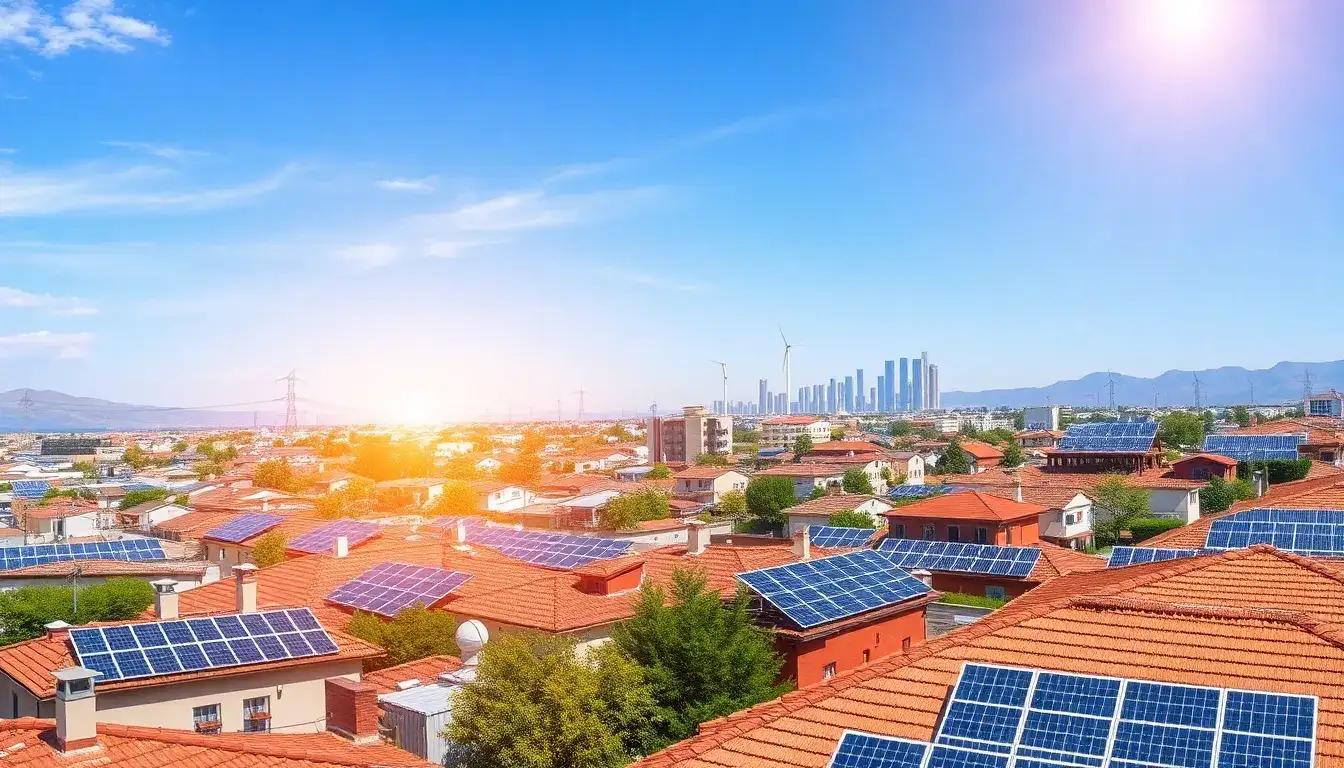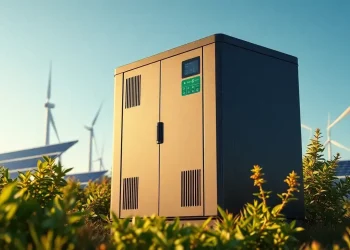
“`html
Countdown to New Policy Sparks a Surge in Distributed Photovoltaic Installations
As the countdown to the new policy continues, a wave of installations in the distributed photovoltaic (PV) sector is underway, with module prices rising for nearly a month. On March 11, an employee from a renewable energy company in the Yangtze River Delta shared a poster on their WeChat, stating, “Racing Against Time to Connect to the Grid” and “Countdown to 531.” There are now just 79 days until the new energy pricing policy takes full effect.
On February 9, the National Development and Reform Commission (NDRC) and the National Energy Administration (NEA) jointly issued a notice titled “Notice on Deepening the Market-Oriented Reform of New Energy Grid Pricing to Promote High-Quality Development of New Energy” (referred to as Document No. 136). This document indicates that, in principle, all new energy projects will enter the electricity market, with grid pricing determined through market transactions. A significant date highlighted is June 1, 2025, which distinguishes between existing and new projects, commonly referred to as the “531” market entry date. Projects coming online after this date will have their electricity prices determined through competitive bidding.
Additionally, in January, the NEA released the “Management Measures for the Development and Construction of Distributed Photovoltaic Power Generation”, which clarified consumption models for various types of distributed PV. This policy, with a deadline referred to as “430,” stipulates that projects initiated after this date must select either self-consumption or partial grid connection, prohibiting full grid sales. In summary, both policies significantly impact the distributed photovoltaic sector, introducing more uncertainty regarding project profitability.
According to industry insiders, the new policies have led some distributed PV companies and platforms to communicate “reduced installation fees” and adjust household leasing settlement prices. There are even reports of terminal companies halting new contracts to avoid missing the grid connection deadline, enforcing restrictions on order signing dates. One industry representative commented, “Currently, there is a sense of uncertainty as various departments are still exploring, and there are concerns about the future. However, the most crucial thing right now is to act quickly.”
In the short term, both industry stakeholders and capital markets are worried about the potential impact of a full market entry on electricity prices, which could affect project yields and the profitability of the sector and individual companies. A representative from JinkoSolar (601778.SH) mentioned in an interview that, according to the NDRC’s timeline, clearer local policy details are expected by the end of 2025, with some major provinces potentially releasing their guidelines as early as the first half of the year, especially in regions where new energy development and electricity market conditions are more mature. These two critical deadlines have directly spurred a surge in distributed project installations in the first half of this year.
JinkoSolar’s representative forecasted that there would likely be an increase in installations before the deadlines. For projects that cannot complete installations in time, the company is inclined to cautiously assess yield and investment standards until local policies are released, but they are not refusing new contracts. The installation rush has also driven up module prices, reversing a previous trend of price declines caused by oversupply. Currently, module prices have increased for nearly a month, according to multiple large module manufacturers.
One leading module manufacturer reported that recent orders for distributed modules are generally priced at over 0.75 yuan/W, with some orders reaching above 0.8 yuan/W. Aiko Solar (600732.SH) stated that its BC module prices can exceed 0.8 yuan/W, projecting further price increases amid the installation rush. Longi Green Energy (601012.SH) confirmed that the average module price currently stands above 0.8 yuan/W, with one source indicating prices have risen to over 0.7 yuan/W. There are even reports of some module quotes approaching 0.9 yuan/W, varying by region, with areas ensuring higher electricity prices seeing slightly elevated module quotes.
At the end of last year, module prices hit historical lows, with bidding prices dropping to 0.6-0.7 yuan/W. The China Photovoltaic Industry Association had previously proposed a cost price of 0.68 yuan/W to encourage healthy industry development. On March 12, InfoLink Consulting released the latest pricing, indicating the average price for TOPCon bifacial double-glass modules in China reached 0.73 yuan/W, an increase of 0.01 yuan/W from the previous week. The firm noted that the market is experiencing an installation rush as stakeholders seek to navigate policy changes, particularly in the distributed market.
The upstream sector of the industry also indicated that current demand for distributed terminals is robust, driving up prices for silicon wafers and batteries. The Silicon Branch of the China Nonferrous Metals Industry Association stated on March 5 that the anticipated installation rush in March and April is expected to elevate downstream component and battery prices, potentially leading to further increases in raw silicon material prices.
However, the price increases driven by policy changes are not expected to be sustainable in the long term. A representative from a leading module manufacturer mentioned that after the surge in demand is met in the first half of the year, there may be some downward pressure on prices in the third quarter. Yet, due to ongoing supply-side reforms in the industry, they remain optimistic about price trends in the fourth quarter and into next year. Another industry insider noted that the price increases are largely a result of temporary demand spikes influenced by policy changes. The sustainability of these price increases will depend on market growth in the latter half of the year.
Ultimately, the ability of industry prices to remain elevated will hinge on improvements in supply and demand dynamics. “The recent recovery in industry prices has been minimal and more a response to imbalances in supply and demand rather than a fundamental shift,” stated Li Zhengguo, president of Longi Green Energy, in a recent interview. He emphasized that a short-term rebound in prices does not necessarily indicate overall industry improvement.
Wang Bohua, honorary chairman of the China Photovoltaic Industry Association, previously pointed out that the introduction of the electricity pricing reforms and the distributed management measures has made the revenue calculations for power plants more complex, increasing the challenges for investment decisions and operational requirements, while also adding uncertainty to investment expectations. Furthermore, there is a time lag between the announcement of these policies and the implementation of specific local measures, which could lead to a wait-and-see approach among investors, potentially affecting installations.
Last year, China’s newly installed photovoltaic capacity exceeded expectations, reaching 277.57 GW, a year-on-year increase of 28.3%. During this period, there were also notable shifts in the structure and regional distribution of new installations. The share of centralized installations once again surpassed that of distributed installations, accounting for 57%; commercial and industrial setups became the primary type of new distributed installations, with residential projects dropping to 11%.
This year, the impact of the distributed photovoltaic management measures and the market-oriented pricing reforms for new energy, coupled with the timing discrepancies in the implementation of these policies across provinces, has fostered a degree of caution within the industry, further increasing uncertainty regarding installation expectations for 2025. In the long term, these two policies are expected to promote healthy development within the photovoltaic sector.
Ni Yanyan, president of Longi’s distributed business in China, stated that following the release of these two documents, the industry will need to navigate a period of exploration and adjustment before gradually returning to normalcy. “However, we are not pessimistic; the policies will create a more orderly market,” Ni added. The introduction of market-oriented electricity trading and grid constraints will encourage the development of energy storage and virtual power plants, necessitating a more diversified approach from industry partners, which will also significantly enhance corporate capabilities.
Ni also believes that these policies will improve the overall capacity of the electricity grid, which will support long-term industry growth. JinkoSolar echoed this sentiment, stating that the introduction of Document No. 136 has clarified the full market entry of new energy pricing while establishing a sustainable pricing settlement mechanism, which greatly stabilizes market expectations for long-term development of green energy operations. They noted that the new policies have made adjustments and new requirements regarding the classification of distributed photovoltaic systems, grid connection models, registrations, and construction, which will clarify market boundaries and restore stable development.
From an investment perspective, despite facing challenges from cost volatility, distributed photovoltaic systems retain competitive advantages due to their proximity to owners and lack of transmission and distribution costs. The investment return advantages of individual projects remain intact. For owners, as self-investment costs gradually decrease, both residential and commercial users will increasingly demand distributed photovoltaic solutions. Recently, Trina Solar (688599.SH) Chairman Gao Jifan publicly stated that market-oriented electricity trading is a significant milestone for the photovoltaic industry, serving as a historic opportunity to fully leverage the market value of energy storage and promote its substantial development.
JinkoSolar further stated that they are well-prepared for the upcoming phase of full market entry for new energy, encompassing resource management, asset management, and a range of emerging business layouts including energy trading, virtual power plants, and energy storage.
“`







